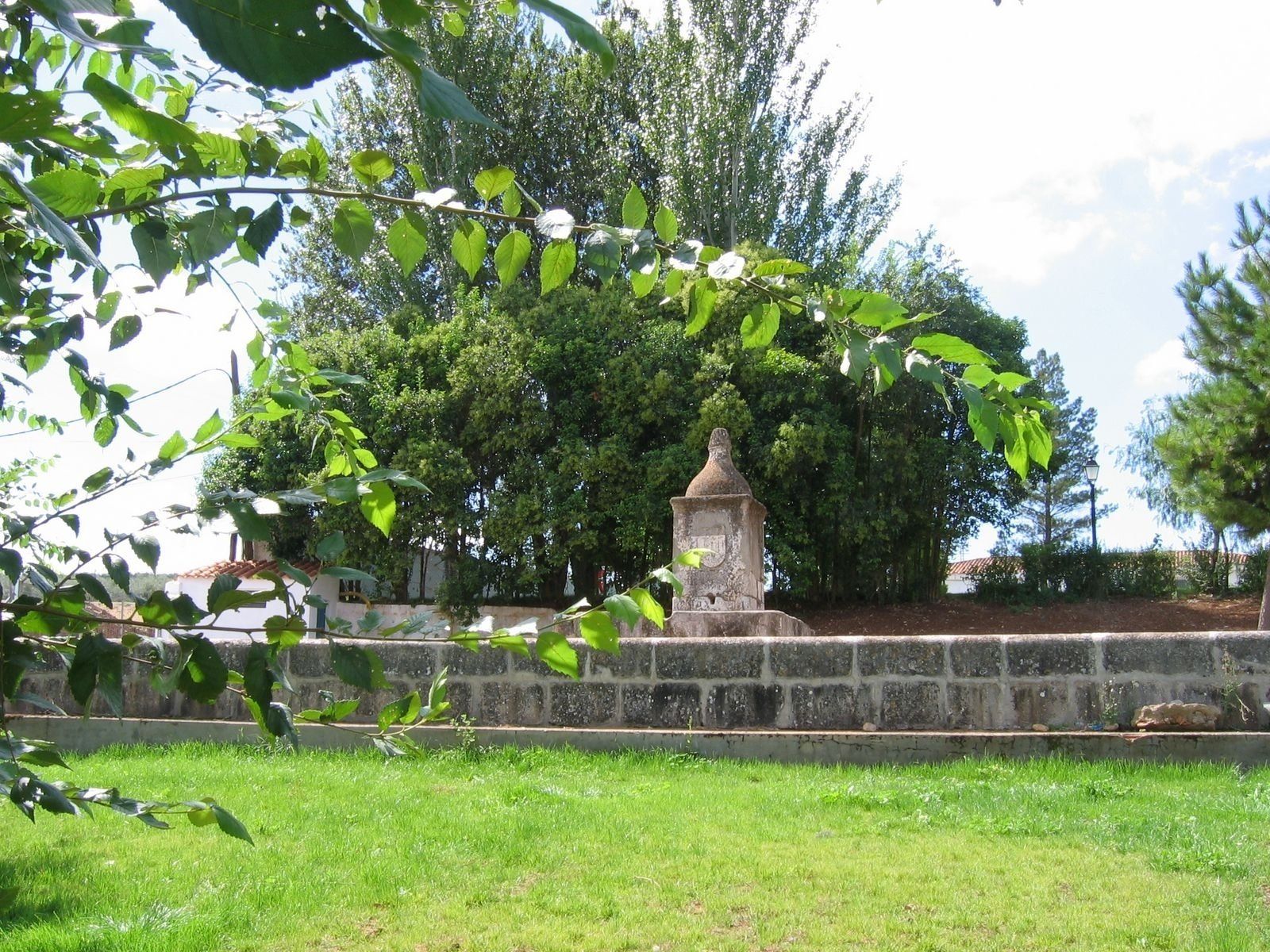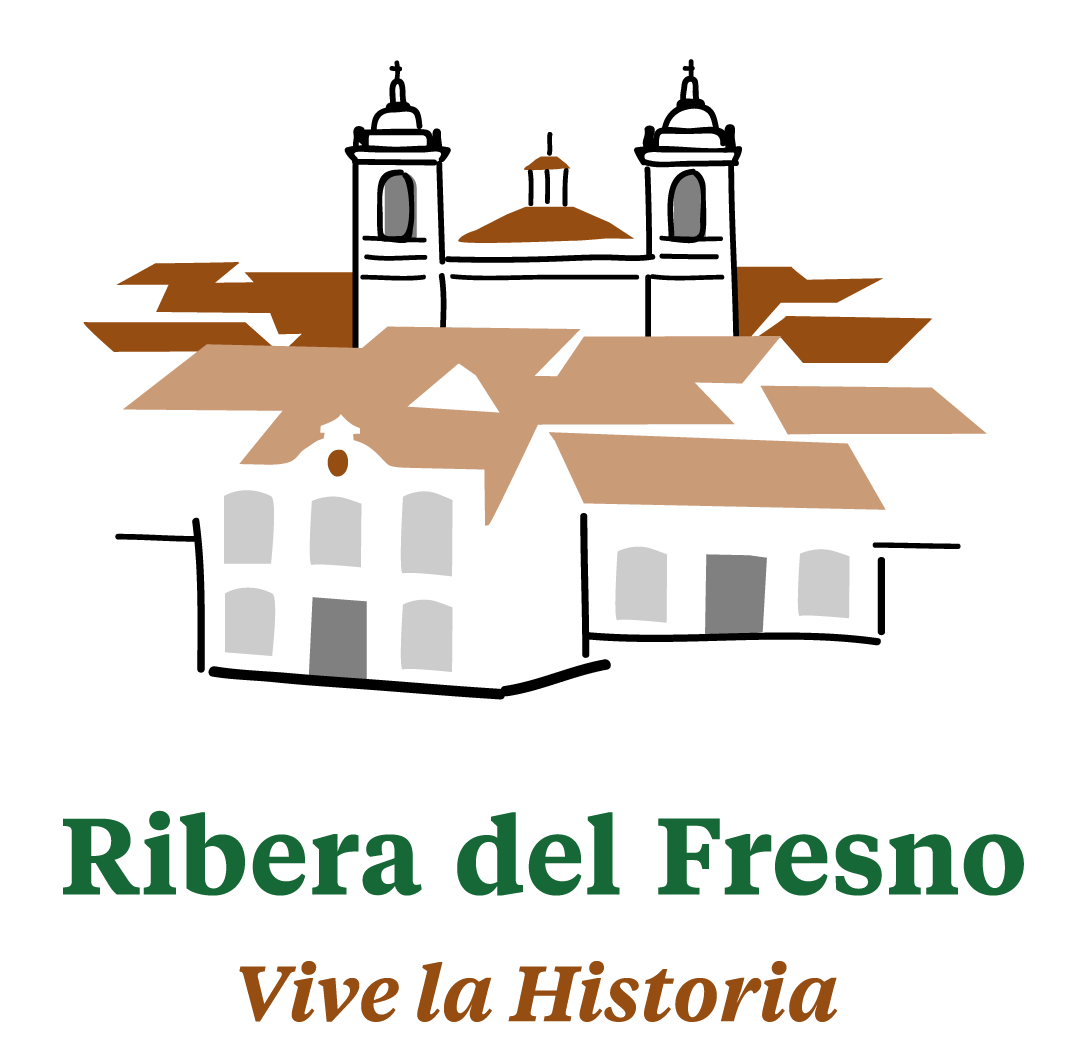PALACIO DE LOS GRAGERA HOUSE
Located in C / San Juan Macías, 11 was the former residence of the Marquis of Fuensanta. Built in the 18th century in Portuguese style, it has a side rear door and stands out for its latticework and heraldic shield.
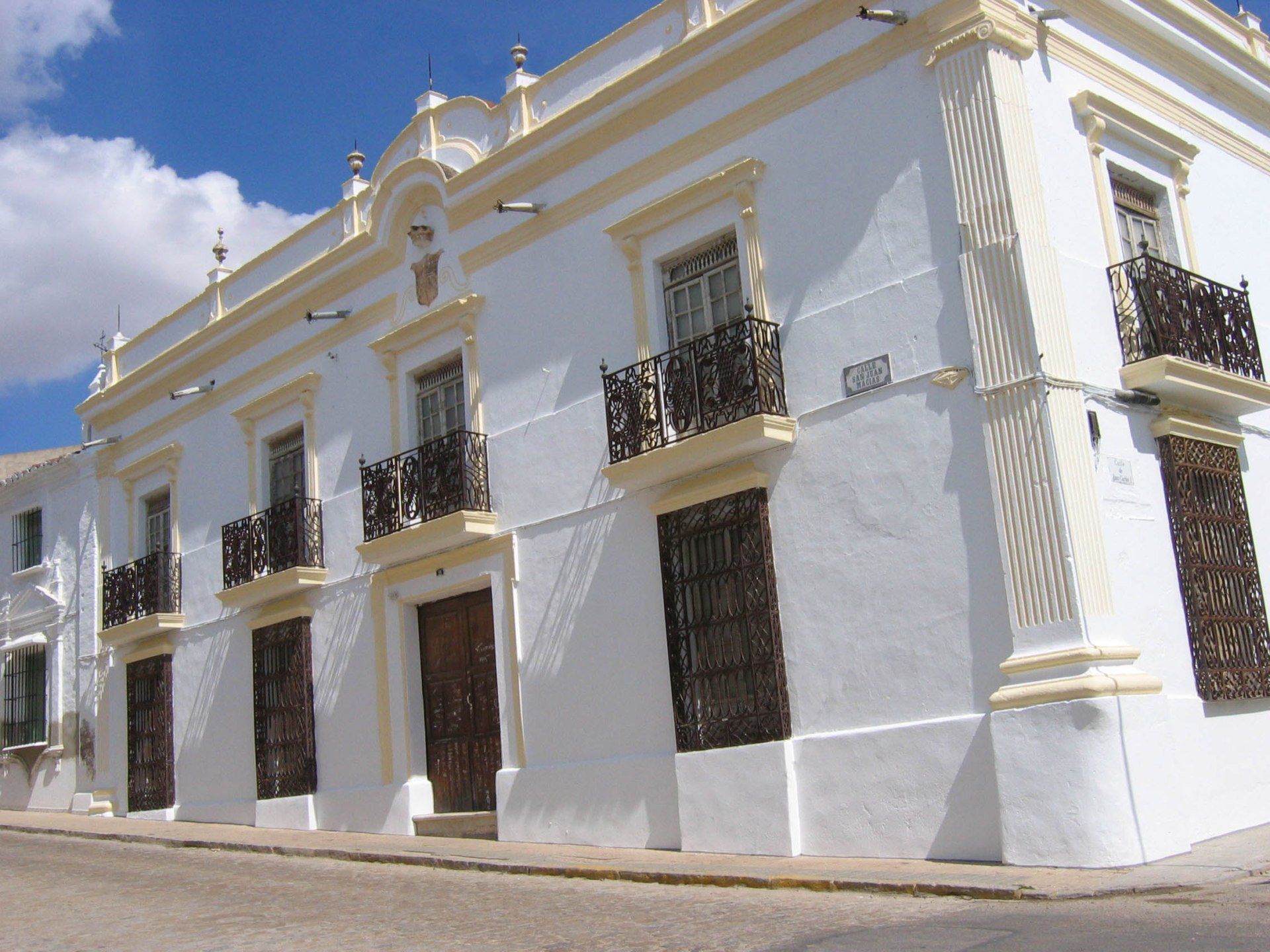
PALACIO DE QUINTANILLA HOUSE
Built in the fifteenth century and rebuilt in the late seventeenth century, it was the residence of the villa's commander and constitutes a picturesque corner on Calle Ayuntamiento. It has spacious nineteenth-century rooms with Mudejar coffered ceilings, a private chapel and a cellar.

VARGAS-DE ZUÑIGA HOUSE
Located in C / San Juan Macías, 2 is a Portuguese Manueline-style palace-house built in the 17th century that originally belonged to the family of Don Fernando Brito Lobo. In the 90s it was donated to the Ribera del Fresno City Council by Don José María Vargas Zúñiga, heir to a noble family and from which it takes its name. It is currently the House of Culture and it houses the Public Library, the "Cerro de Hornachuelos" Interpretation Center, the Municipal School of Music and the Ethnographic Center on the Oil Mill.
Its enormous whitewashed facade impresses, contrasting with the black of its five wrought iron windows in which the Santiago Cross, its large balconies and the shield with veneer can be seen.

MARQUÉS DE BAZO'S HOUSE
House-palace of the Carrasco Holguín (1787) or of the Bazo Blasco (1900) located on Calle Cura, 10 is an 18th century manor house that belonged to the Marquis of Bazo. On its façade, its vault-shaped balcony and shield stand out.

TOWN HALL SQUARE
15th century square originally flanked by the old and disappeared Franciscan Convent of Jesus and Mary, currently City Hall and the Parish Church of Our Lady of Grace.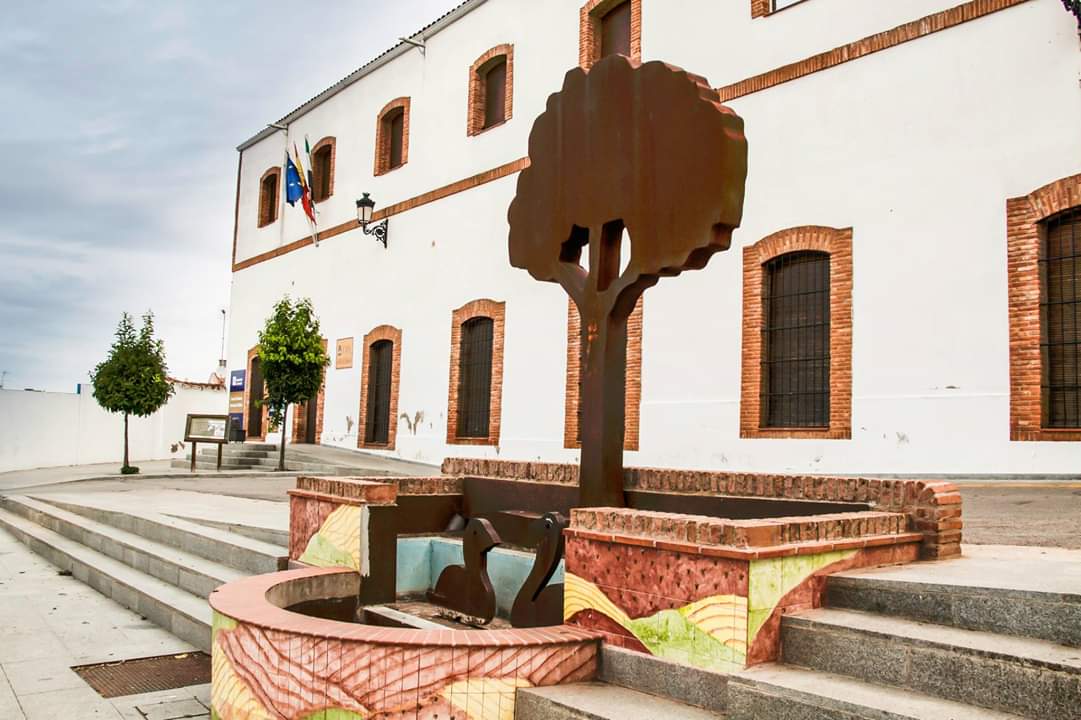
PARISH CHURCH OF OUR LADY OF GRACE
Original work of the thirteenth century, it was expanded in the time of the Catholic Monarchs and rebuilt in 1745 and 1859, according to records and inscriptions now disappeared. It is a construction of large proportions made of whitewashed masonry, on whose shield we can see the Cross of Santiago. Its spacious interior has a Latin cross plan with a single nave and a double access atrium, which is resolved with a half-barrel vault with lunettes, chapels between stirrups covered with terraces and a head dome. It is considered a building of great artistic value for its design and for the correctness of its structure, the two twin towers on the main front facade unique in the province of Badajoz. Inside it preserves a remarkable baroque altarpiece from the end of the 17th century made by Alonso Rodríguez Lucas. In her is the image of Our Lady of Grace, sculpture of gothic style, and the image of the Virgin of the Valley, of protogothic style. The Plateresque style pulpit made of white Estremoz marble also stands out, as well as the Processional Cross made of gilded silver, the work of Juan de Aldana. Worship hours: Winter, Saturdays at 7:30 p.m. and summers at 8:30 p.m.

CHAPEL OF LA AURORA

HERMITAGE OF THE CHRIST OF MERCY
Located on Avenida de la Constitución and preceded by a large and emblematic pedestrian promenade, it is a clear example of the town's religious tradition. It is an 18th century building with an attractive architectural composition where its spectacular exterior catches your attention, where its bell tower stands out above the main door, its elegant front atrium and the lateral arcades.
Its interior shows the Latin cross plan of a single nave, a rectangular main chapel with a beautiful dressing room, where the carving of the Christ of Mercies, patron saint of the town, of the famous sculptor of the Seville school Pedro Roldán rests. Worship hours: Winter, Saturdays at 7:30 p.m. and summers at 8:30 p.m.

HERMITAGE OF THE OLD CHRIST
Religious monument without worship was built in the 16th century and is in the Baroque style, although it retains its original Gothic style on the west facade. It only maintains the structure of the main nave represented by its dome and a bell tower with a peculiar bulbous finish.
CHAPEL OF SAN JUAN MACÍAS
Modern construction erected in 1985 on the birthplace of San Juan Macías, a Dominican friar from the 16th century, canonized in 1975 to whom he pays tribute located on the street that bears his name. It consists of two floors. On the ground floor there is a chapel with a large stained glass window and the upper floor houses a museum on the life of the saint.
Worship hours: in winter on Tuesdays, Wednesdays, Thursdays, Fridays and Sundays at 7:30 p.m. In summer at 8:30 p.m. except sundays

HERMITAGE OF SAN ISIDRO
Modern construction built in 1998 about four kilometers from the town in the area known as “Canchal”, on the Hinojosa del Valle road. Its surroundings host the traditional pilgrimage every year in honor of the patron saint of farmers.

WELL OF SAN JUAN MACÍAS
Located a few kilometers from the town center on the estate called “Valle Garzon”, this sanctuary was built in 1967 in the place where, according to tradition, San Juan Macías, saint and favorite son of the town, performed his first miracle. It is a temple erected to honor his memory covered by a groin vault built with granite masonry, the front of which remains open through three horseshoe arches supported by four columns. The existing mall next to it and its surroundings host the traditional pilgrimage in honor of the saint held on the Sunday following the patron saint festivities. Open all the year long.
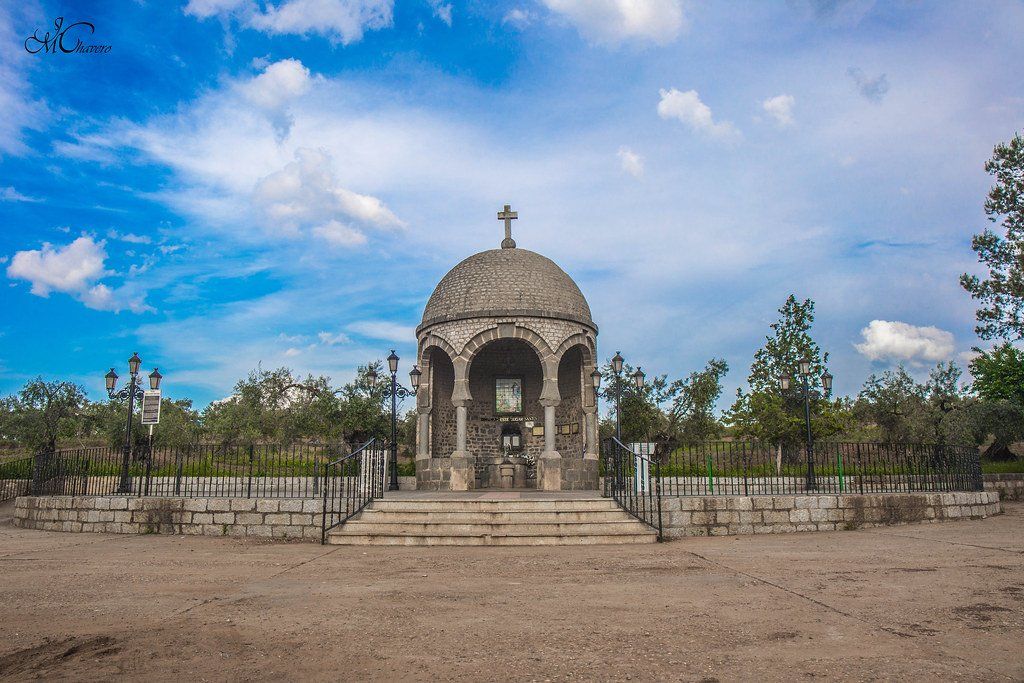
PILLAR OF THE PIPE
Pillar built with quarry stone that is located on the outskirts of the town and is of great ethnographic interest. It is originally from the XV century and rebuilt in 1833, as it appears in the inscription that appears on its emblematic shield that finishes off its turret.
